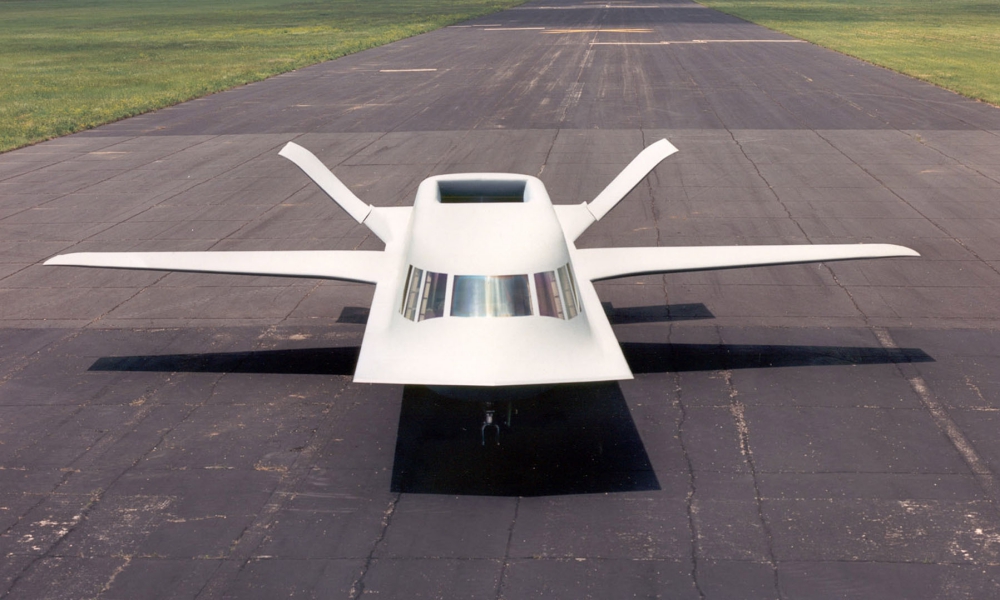Northrop Grumman’s stealth aircraft that was built in secrecy during the 1980s represents a major milestone in surveillance aircraft technology. Tacit Blue — nicknamed “the whale” for its unusual shape — was an experimental prototype that demonstrated that aircraft could spy on enemy operations without being detected by radar.
During its three-year secret operation, Tacit Blue helped engineers develop low-observable, aka stealth, characteristics that are still critical in today’s military aircraft.
Undercover in the ’80s
Much like many great inventions, Tacit Blue wasn’t immediately successful. The aircraft was developed as part of the Defense Advanced Research Projects Agency’s (DARPA) Battlefield Surveillance Aircraft Experiment (BSAX) in the 1970s. DARPA asked Northrop to continue the project in order to create an aircraft that could observe enemies from above without being detected. In order to peer through the clouds to see what was happening on the ground, an advanced radar was required.
Instead of adding radar equipment to an existing jet, a new aircraft was built around a large radar system that was revolutionary for its time because it could point its beam in different directions without needing to physically move. The resulting design was a rectangular aircraft with slightly rounded edges and thin wings.
Prior to Tacit Blue, stealth aircraft typically featured faceted surfaces, which were good at minimizing radar detection, but bad at flying aerodynamically. The “whale” proved that slightly curved edges were both stealthier and more aerodynamic than flatter designs. This revelation influenced the designs of surveillance aircraft and bombers for decades.
The Descendants
During Operation Desert Storm in 1991, the E-8 Joint Surveillance Target Attack Radar System, or Joint STARS, was first deployed. It uses the sensor systems that were originally developed for Tacit Blue, which allow it to determine the direction, speed and patterns of military activity of ground vehicles and helicopters.
A manned bomber called the B-2 Spirit also grew from Tacit Blue’s low-observable yet aerodynamic features. The B-2 uses a combination of reduced infrared, acoustic, electromagnetic, visual and radar signatures, plus composite materials, special coatings and a unique wing design. This stealth design enables the bomber to penetrate enemy areas while flying at high altitudes, which provide a bird’s-eye view with minimal chance of being caught.
Global Hawk is an unmanned aircraft system designed to fly at high altitudes in order to provide near-real-time intelligence, surveillance and reconnaissance. While it has been through several iterations since it debuted in 1998, the Block 30 Global Hawk carries sophisticated imaging and electronic signals sensors for situational awareness and intelligence-gathering over large geographic areas.
Source: Now by Northrop Grumman

